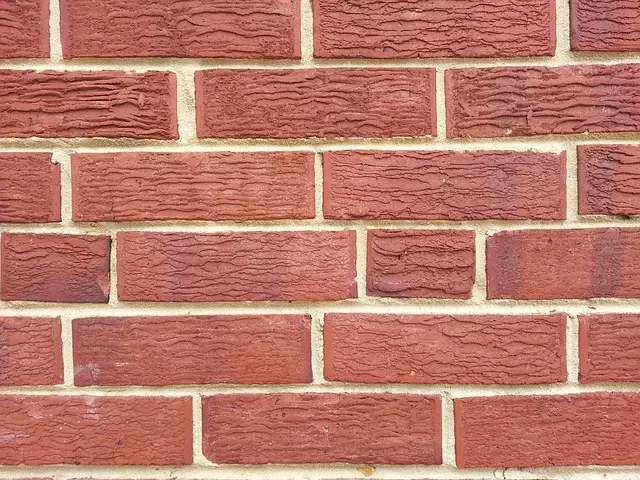Basement water leaks are a common residential foundation issue caused by groundwater intrusion, faulty plumbing, or poor drainage. Identifying these entry points is crucial for effective residential foundation repair. Early detection of cracks, moisture stains, and other signs is vital to prevent structural damage, costly repairs, and health risks. Homeowners can use tools like moisture meters and thermal imaging cameras for diagnosis. Options range from short-term fixes to long-term solutions like underpinning or piering. Regular inspections, improved drainage, and sealing cracks can protect against future leaks. Case studies demonstrate the success of advanced diagnostic techniques and modern methods in repairing foundations. Choosing a licensed, insured contractor with a proven track record ensures high-quality repairs for long-term stability.
Basement water leaks and foundation issues are common home problems that require immediate attention. Understanding these issues is crucial for maintaining a safe, dry, and structurally sound residence. This article delves into the root causes of basement leaks, their impact on foundations, and signs to look out for. We explore effective diagnosis methods, various repair options, preventative measures, real-life case studies, and essential tips for selecting the right contractor for seamless residential foundation repair solutions.
Understanding Basement Water Leaks: Common Causes and Entry Points

Basement water leaks are a common issue that can lead to serious foundation problems in residential homes. Understanding the root causes and entry points is essential for effective residential foundation repair. One of the primary reasons for these leaks is ground water intrusion, often occurring due to cracks or gaps in the foundation walls or floors. These vulnerabilities can be exacerbated by poor drainage around the property, causing water to pool and seep into the basement through small openings.
Another frequent cause is faulty plumbing or appliances located in the basement. Leaks from pipes, water heaters, or washing machines can introduce moisture directly into the space, leading to water damage and potential foundation issues over time. Identifying these specific entry points—whether from exterior sources like ground water or interior plumbing—is crucial for targeted and effective residential foundation repair solutions.
The Connection Between Water Leaks and Foundation Damage

Water leaks in basements often indicate underlying foundation issues, creating a vicious cycle that exacerbates damage over time. When water seeps into cracks or crevices within the basement walls and foundation, it expands and contracts with temperature fluctuations, causing further structural instability. This process weakens the concrete, leading to larger cracks and potential collapse. Regular water exposure also accelerates corrosion of steel reinforcements, which are vital for maintaining the integrity of residential foundation repair efforts.
The impact extends beyond visible cracks; excessive moisture can erode important components like beam splices, joints, and anchor bolts, compromising the entire structural framework. Prompt identification and remediation of water leaks are crucial steps in mitigating foundation damage. Addressing these issues early on not only preserves the home’s structural integrity but also prevents costly repairs and potential health hazards associated with prolonged moisture intrusion.
Signs of Foundation Issues: What to Look Out For in Your Home

If you suspect your home’s foundation may be experiencing issues, it’s crucial to identify signs early on. One of the most prominent indicators is visible cracks in the walls or ceiling. These cracks, especially those wider than 1/8th of an inch, can signify structural problems. Pay close attention to newly formed or widening cracks, as they might indicate underlying foundation shifts. Another red flag is uneven floors or doors that don’t close properly. Tilted or bulging walls are also concerning and may point to serious foundation issues requiring prompt residential foundation repair.
Unusual noises like creaking or groaning sounds coming from the foundation or basement areas could suggest structural instability. Water stains on walls, ceilings, or floors, particularly in basements, are another sign to watch out for. Pooling water or moist environments can indicate leaks and subsequent damage, requiring immediate attention before they lead to more severe residential foundation repair needs.
Diagnosing the Problem: Methods for Identifying Leak Sources

Diagnosing basement water leaks and foundation issues is a crucial step in addressing them effectively. Homeowners can begin by examining visible signs like mold growth, moisture stains on walls, or bubbling paint, which often indicate leaky pipes or cracks in the foundation. Using a flashlight and a thorough inspection, one can pinpoint exact locations of drips or seepage.
For more subtle leaks, specialized tools like moisture meters or thermal imaging cameras are valuable assets. Moisture meters measure humidity levels, helping to identify wet spots that might be hidden behind walls or floors. Thermal imaging cameras, on the other hand, visualize temperature variations, revealing areas with underlying moisture problems, which can point to leaky pipes or foundation cracks that require attention from a residential foundation repair professional.
Residential Foundation Repair Options: Short-term and Long-term Solutions

When dealing with basement water leaks and foundation issues, homeowners have several residential foundation repair options available, both short-term and long-term. Short-term solutions like temporary waterproof membranes or plug-and-play drainage systems can provide immediate relief by preventing further damage. These quick fixes are ideal for delaying the need for more extensive repairs until a budget can be allocated.
Long-term residential foundation repair involves addressing the root causes, such as soil settlement, faulty drainage, or structural weaknesses. This may include underpinning, where additional support beams are installed below the foundation, or piering, which elevates and stabilizes the structure. These solutions not only fix immediate problems but also ensure the longevity of your home’s foundation, protecting against future leaks and providing peace of mind.
Preventative Measures: Safeguarding Your Home Against Future Water Leaks

To prevent future water leaks and foundation issues, proactive measures are essential for any homeowner. Regular inspection is key; check for any signs of moisture, cracks in the foundation, or visible water stains on walls and ceilings. Addressing these issues early can save significant costs associated with residential foundation repair later.
Implementing effective drainage systems around your home is another preventative measure. Ensure proper grading of land away from the foundation to divert rainwater. Install exterior drains and downspout extensions to direct water away from the basement or crawl space. Additionally, consider sealing any cracks or gaps in the foundation using specialized products designed for this purpose, further safeguarding your home against potential leaks.
Case Studies: Real-life Examples of Successful Foundation Repairs

In the realm of residential foundation repair, real-life case studies offer valuable insights and serve as a testament to successful interventions. One such example involves a home suffering from chronic water leaks in its basement, caused by a cracked foundation. The issue was meticulously diagnosed by experts who identified the source of the leak and devised a comprehensive plan. This involved repairing the crack using advanced epoxy injection methods, reinforcing the foundation with steel bars, and implementing a robust waterproofing system.
The transformation was remarkable. After the repair, the home was no longer plagued by water intrusion, and the once-fragile foundation was stabilized. This case highlights the effectiveness of combining technological solutions with traditional techniques in addressing complex foundation issues. It demonstrates that with prompt action and expert intervention, even the most challenging residential foundation repairs can lead to lasting solutions, ensuring homes remain sturdy and protected for years to come.
Choosing the Right Contractor: Tips for Effective Residential Foundation Repair

Choosing the right contractor is crucial when dealing with basement water leaks and foundation issues. Look for a company specializing in residential foundation repair, as they have the expertise to assess and fix various problems like cracks, settling, or bowing walls. Ensure the contractor has a proven track record, valid licenses, and insurance to protect your investment.
Read reviews from previous clients to gauge their satisfaction levels and communication skills. A reputable contractor should offer transparent pricing, detailed estimates, and a clear scope of work. They should also provide references and examples of successful projects, demonstrating their ability to deliver high-quality repairs that ensure the long-term stability of your home’s foundation.
